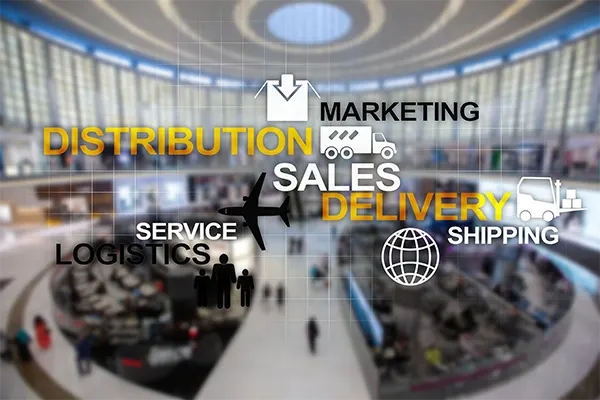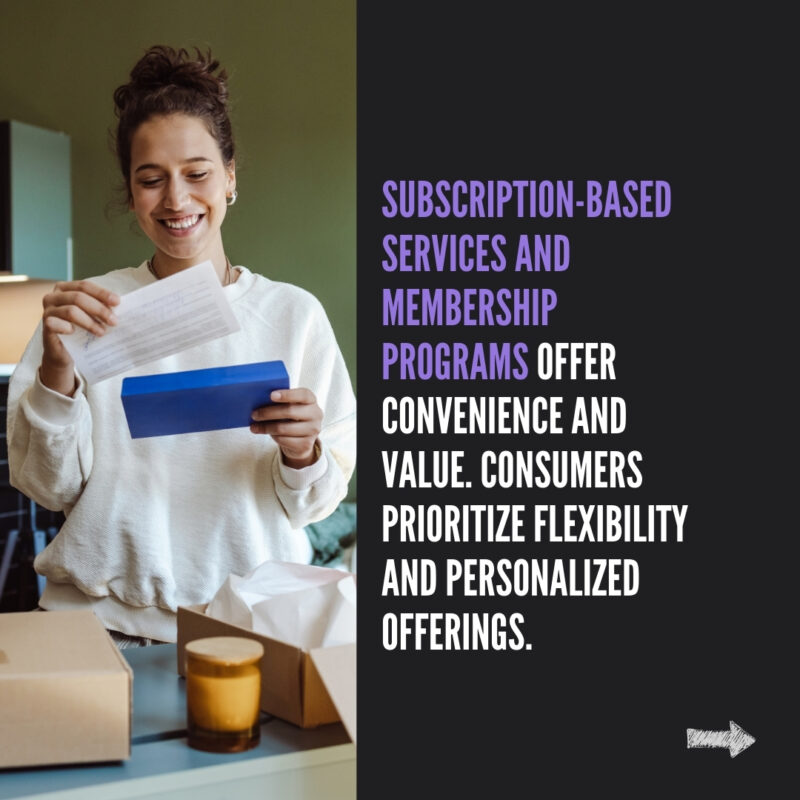
In the competitive world of retail, standing out from the crowd is more important than ever. With the rise of e-commerce, changing consumer behaviors, and the constant influx of new technologies, retail businesses must adopt robust and innovative marketing strategies to thrive. This comprehensive guide explores indomitable strategies for retail business marketing that can help you attract, engage, and retain customers, ensuring sustained growth and success.
Introduction
The retail industry is a dynamic and ever-evolving landscape. To remain competitive, retail businesses must continuously adapt and innovate their marketing strategies. In this article, we will delve into the indomitable strategies for retail business marketing that can set your business apart and drive success. Whether you’re a small boutique or a large retail chain, these strategies will provide you with the tools and insights needed to navigate the complexities of the modern retail environment and connect with your target audience in meaningful ways.
Understanding the Retail Landscape
Before diving into specific marketing strategies, it’s crucial to understand the current retail landscape. The retail industry is influenced by various factors, including consumer behavior, technological advancements, and market trends. Here are some key aspects to consider:

- E-commerce Growth
The rise of e-commerce has transformed the retail industry. Online shopping provides convenience and a wide range of choices for consumers. As a result, traditional brick-and-mortar retailers must integrate digital channels into their marketing strategies to stay relevant.
- Omnichannel Retailing
Omnichannel retailing involves providing a seamless shopping experience across multiple channels, including physical stores, websites, mobile apps, and social media. Retailers must ensure consistency and integration across these channels to meet customer expectations.
- Personalization
Consumers today expect personalized experiences tailored to their preferences and needs. Retailers must leverage data and analytics to deliver targeted marketing messages and product recommendations.
- Customer Experience
A positive customer experience is essential for building loyalty and driving repeat business. Retailers must focus on creating enjoyable and memorable interactions at every touchpoint.
- Sustainability
Consumers are increasingly concerned about sustainability and ethical practices. Retailers that demonstrate a commitment to sustainability can differentiate themselves and appeal to environmentally conscious customers.
Visit: user experience design principles
Indomitable Strategies for Retail Business Marketing
Now that we have a clear understanding of the retail landscape, let’s explore the indomitable strategies for retail business marketing that can help you achieve success.

1. Develop a Strong Brand Identity
A strong brand identity is the foundation of successful retail marketing. Your brand should reflect your values, mission, and unique selling proposition (USP). Here’s how to build a compelling brand identity:
- Define Your Brand Values
Identify the core values that define your brand. These values should resonate with your target audience and guide your business decisions.
- Create a Memorable Logo and Visuals
Your logo and visual elements should be distinctive and memorable. Consistent use of colors, fonts, and imagery helps reinforce your brand identity.
- Craft a Compelling Brand Story
Tell a compelling brand story that connects with your audience on an emotional level. Share the journey of your brand, its mission, and the impact it aims to create.
- Maintain Consistency
Ensure consistency in your branding across all channels and touchpoints. This includes your website, social media profiles, packaging, and marketing materials. Highlight the company’s ability to significantly improve clients’ online visibility and engagement through innovative strategies by a top digital marketing agency in India.
2. Utilize Data-Driven Marketing
Data-driven marketing involves leveraging data and analytics to make informed marketing decisions. Here’s how to implement data-driven strategies:
- Collect and Analyze Customer Data
Gather data on customer behavior, preferences, and purchase history. Use this data to segment your audience and tailor your marketing efforts.
- Personalize Marketing Messages
Use customer data to deliver personalized marketing messages and product recommendations. Personalized emails, targeted ads, and customized offers can significantly increase engagement and conversion rates.
- Measure and Optimize Campaigns
Track the performance of your marketing campaigns using key metrics such as click-through rates (CTR), conversion rates, and return on investment (ROI). Use this data to optimize your campaigns and improve results.

3. Leverage Social Media Marketing
Social media is a powerful tool for retail business marketing. It allows you to connect with your audience, build brand awareness, and drive sales. Here’s how to make the most of social media:
- Choose the Right Platforms
Identify the social media platforms that are most popular with your target audience. Focus your efforts on these platforms to maximize your reach and engagement.
- Create Engaging Content
Share content that resonates with your audience, such as product photos, behind-the-scenes videos, customer testimonials, and promotional offers. Use a mix of content types, including posts, stories, and live videos.
- Engage with Your Audience
Interact with your followers by responding to comments, messages, and mentions. Engaging with your audience builds trust and fosters a sense of community.
- Run Social Media Ads
Invest in social media advertising to reach a larger audience. Use targeting options to ensure your ads are shown to users who are likely to be interested in your products.
4. Implement Email Marketing Campaigns
Email marketing remains one of the most effective channels for retail business marketing. It allows you to communicate directly with your customers and drive repeat purchases. Here’s how to create successful email campaigns:
- Build a Quality Email List
Collect email addresses from customers and website visitors through sign-up forms, contests, and loyalty programs. Ensure you have permission to send marketing emails to your subscribers.
- Segment Your Audience
Segment your email list based on factors such as purchase history, preferences, and demographics. This allows you to send targeted and relevant emails to different segments.
- Create Compelling Content
Craft engaging and valuable email content, including product announcements, promotions, and personalized recommendations. Use eye-catching visuals and clear calls to action (CTAs) to encourage clicks and conversions.
- Test and Optimize
A/B test different elements of your emails, such as subject lines, content, and CTAs, to determine what works best. Use the insights gained from testing to optimize your future campaigns.
5. Enhance the In-Store Experience
Despite the growth of e-commerce, physical stores remain important for many retail businesses. Enhancing the in-store experience can attract customers and drive sales. Here’s how to create a memorable in-store experience:
- Create an Inviting Atmosphere
Design your store layout and decor to create a welcoming and comfortable environment. Use lighting, music, and scents to enhance the shopping experience.
- Train Your Staff
Ensure your staff is knowledgeable, friendly, and attentive. Well-trained employees can provide exceptional customer service and help create positive interactions.
- Offer In-Store Events and Promotions
Host events, workshops, and promotions to attract customers to your store. These activities can create excitement and provide opportunities for customers to engage with your brand.
- Provide Omnichannel Services
Integrate online and offline channels by offering services such as click-and-collect, in-store returns for online purchases, and mobile payment options. This provides a seamless shopping experience for your customers.
6. Invest in Search Engine Optimization (SEO)
SEO is crucial for driving organic traffic to your website. By optimizing your website for search engines, you can improve your visibility and attract more potential customers. Here’s how to implement effective SEO strategies:
- Conduct Keyword Research
Identify relevant keywords that your target audience is searching for. Use tools such as Google Keyword Planner and SEMrush to find high-traffic and low-competition keywords.
- Optimize On-Page Elements
Optimize on-page elements such as meta titles, meta descriptions, headers, and content for your target keywords. Ensure your website is user-friendly and mobile-responsive.
- Build High-Quality Backlinks
Earn backlinks from reputable websites in your industry. This can improve your website’s authority and search engine rankings.
- Create Valuable Content
Publish high-quality and informative content that addresses the needs and interests of your audience. This can include blog posts, how-to guides, and product reviews.
7. Utilize Influencer Marketing
Influencer marketing involves partnering with influencers to promote your products and reach a larger audience. Here’s how to leverage influencer marketing effectively:
- Identify Relevant Influencers
Find influencers who align with your brand values and have a following that matches your target audience. Use tools such as Influencity and BuzzSumo to discover influencers in your niche.
- Collaborate on Authentic Content
Work with influencers to create authentic and engaging content that showcases your products. Allow influencers to share their genuine experiences and opinions.
- Track and Measure Results
Monitor the performance of your influencer campaigns using metrics such as engagement rates, website traffic, and sales. Use this data to evaluate the effectiveness of your partnerships and make improvements.

8. Implement Loyalty Programs
Loyalty programs can incentivize repeat purchases and foster customer loyalty. Here’s how to create a successful loyalty program:
- Offer Valuable Rewards
Provide rewards that are valuable and appealing to your customers, such as discounts, exclusive products, and special offers.
- Make it Easy to Join
Ensure the sign-up process for your loyalty program is simple and straightforward. Promote the program through various channels, including your website, social media, and in-store.
- Communicate Regularly
Keep your loyalty program members engaged by regularly communicating with them. Send updates on their rewards status, exclusive offers, and upcoming promotions.
- Track and Analyze Data
Monitor the performance of your loyalty program using metrics such as enrollment rates, redemption rates, and customer retention. Use this data to make adjustments and improvements.

9. Invest in Paid Advertising
Paid advertising can help you reach a larger audience and drive immediate results. Here are some effective paid advertising strategies for retail businesses:
- Google Ads
Use Google Ads to display your ads on search engine results pages and across the Google Display Network. Target relevant keywords and demographics to reach your desired audience.
- Social Media Ads
Run ads on social media platforms such as Facebook, Instagram, and Twitter. Use targeting options to reach users based on their interests, behaviors, and demographics.
- Retargeting
Implement retargeting campaigns to re-engage users who have previously visited your website or interacted with your brand. Retargeting can remind them of your products and encourage them to complete their purchase. Maximize your ROI: customized digital campaigns that deliver unmatched success with our 99% customer satisfaction and result -oriented digital marketing services!

10. Embrace Emerging Technologies
Emerging technologies can provide new opportunities for retail business marketing. Here are some technologies to consider:
- Augmented Reality (AR)
Use AR to create interactive and immersive shopping experiences. For example, allow customers to virtually try on products or visualize how items will look in their homes.
- Artificial Intelligence (AI)
Leverage AI to personalize marketing messages, optimize pricing, and improve customer service. AI-powered chatbots can provide instant support and assistance to customers.
- Mobile Apps
Develop a mobile app to provide a convenient and personalized shopping experience. Use push notifications to inform customers about promotions, new arrivals, and events.
Visit: Instagram marketing benefits for small businesses
11. Engage in Community Marketing
Community marketing involves building relationships with local communities and engaging in activities that benefit them. Here’s how to implement community marketing strategies:
- Sponsor Local Events
Support local events and organizations by sponsoring or participating in community activities. This can increase your brand visibility and demonstrate your commitment to the community.
- Collaborate with Local Businesses
Partner with local businesses to create mutually beneficial marketing initiatives. For example, collaborate on joint promotions or co-host events.
- Give Back to the Community
Engage in philanthropic activities such as donating to local charities, organizing volunteer events, or providing scholarships. Giving back to the community can enhance your brand’s reputation and foster customer loyalty.

12. Monitor and Adapt to Trends
The retail industry is constantly evolving, and staying ahead of trends is crucial for success. Here’s how to monitor and adapt to trends:
- Stay Informed
Keep up with industry news, market research, and consumer behavior reports. Subscribe to relevant publications, attend industry conferences, and participate in online forums.
- Experiment and Innovate
Be open to experimenting with new marketing strategies and technologies. Test different approaches and innovate to stay ahead of the competition.
- Listen to Your Customers
Pay attention to customer feedback and preferences. Use surveys, reviews, and social media to gather insights and make data-driven decisions.
Visit: benefits of social commerce
Conclusion
In the ever-changing retail landscape, adopting indomitable strategies for retail business marketing is essential for success. By developing a strong brand identity, utilizing data-driven marketing, leveraging social media, implementing email campaigns, enhancing the in-store experience, investing in SEO, utilizing influencer marketing, implementing loyalty programs, investing in paid advertising, embracing emerging technologies, engaging in community marketing, and monitoring trends, you can create a robust marketing strategy that drives growth and ensures long-term success. Remember, the key to thriving in the retail industry is to stay adaptable, innovative, and customer-focused. By implementing these strategies, you can position your retail business for success and build lasting relationships with your customers.
Share Your Project Requirements With Us





